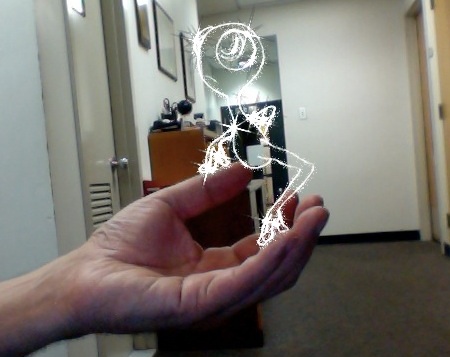Continuing from yesterday…
Today I discovered my first eccescopic creature. I was attempting to peer into the future, when she unexpectedly hopped right onto my hand. I was able to identify this little gal as a kwalado.
Kwalados are expert climbers. They are also extremely gentle creatures, and rather shy. If you hold your hand very still, they will use their long prehensile toes to clamber up your fingers (see photo).
They also have an unnerving but oddly charming tendency to stare deeply into your eyes. I understand they are quite soulful, and fall all too easily into fits of sadness. Fortunately, all kwalados, being mathemalians, love perfect numbers. If you name any three perfect numbers, they will cheer right up.
I’m very sorry about the quality of the photo. The kwalado is a bit difficult to see, since like all eccescopic creatures it dwells in the future. I’m going to try some image enhancement techniques. With any luck, tomorrow I will be able to show you a better picture.

